Larger than many nations, Texas is a land of grand contrasts and warm hospitality — where sprawling cities buzz with energy, quiet towns embrace tradition, and landscapes stretch from sun-kissed beaches to rugged mountain trails.
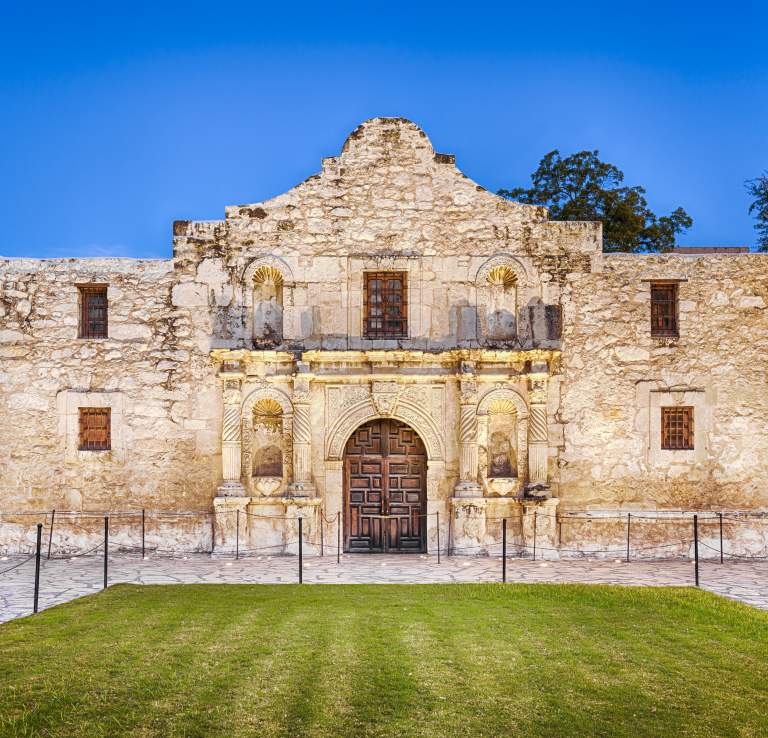
For many proud Texans, the legendary Alamo in San Antonio isn’t just a historic site — it’s a place of deep reverence. Set just off the city’s main plaza and free to enter, this is the location of the iconic 1836 siege, where a few hundred revolutionaries, including Davy Crockett, William Travis, and James Bowie, fought to the death against thousands of Mexican soldiers.
Originally built as a mission church beginning in 1755, the main building is now called the Shrine. Surrounding it, various exhibitions recount the story of the Battle of the Alamo — though historians still debate many of the details. Living-history interpreters bring the past to life in the Cavalry Courtyard, while the Long Barrack houses a traditional museum. Once the priests’ residence and later a battlefield hospital, the Long Barrack now features exhibits on both Mexican and Texan troops. A 17-minute film also offers a compelling overview — and a welcome escape from the Texas heat.
Telling the full story of the Alamo remains complex, as accounts vary and accurate first-hand documentation is lacking. What’s generally agreed upon is that on February 23, 1836, Mexican General Antonio López de Santa Anna led an army of between 2,500 and 5,000 soldiers to lay siege to the Alamo. Inside were about 160 defenders, including the ailing James Bowie, his successor in command William B. Travis, and Davy Crockett — the Tennessee congressman and frontiersman known for his coonskin cap and vocal opposition to Andrew Jackson’s brutal policies against Native Americans.
Also present were enslaved African Americans owned by Bowie and Travis, whose roles in the battle have historically been underrepresented. Remarkably, two of these men were among the few male survivors of the siege.
Travis famously wrote a desperate appeal for reinforcements, declaring his men’s resolve with the phrase “Victory or Death.” Due to the delay in communication, only about 30 volunteers from Gonzales made it in time to bolster the defenders’ numbers to around 189, according to records maintained by the Daughters of the Republic of Texas — which even include all but one of the defenders’ names, the exception being an unidentified African American man.
After 13 days of bombardment, Santa Anna’s forces finally stormed the fort. Mexican losses were immense — estimates vary between 1,000 and 2,000 casualties. Nearly all of the Alamo’s defenders were executed after the final assault; the few survivors were interrogated and released.
Admission to the church is free, but you’ll need to reserve a timed-entry slot in advance. For a deeper experience, you can join a one-hour guided tour or opt for the Victory or Death audio tour, a self-guided 45-minute journey through the site’s history. Both options include access to the Alamo Exhibit, which houses the world’s largest private collection of Alamo artifacts — generously donated by British musician Phil Collins in 2014.
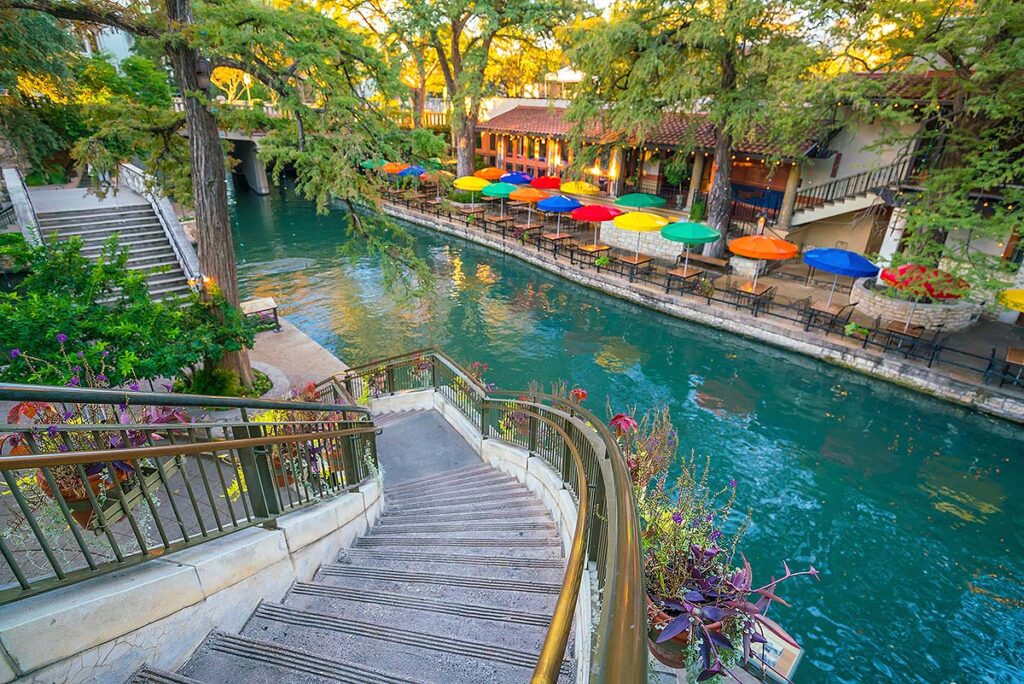
Stretching 15 miles below street level, the San Antonio River Walk is a scenic network of waterside pathways lined with lively bars, restaurants, and lush gardens. It’s one of the city’s top attractions and perfect for a leisurely stroll through downtown and beyond. Stone bridges arch over the peaceful water, offering quiet moments even during the city’s busiest days.
In summer, the River Walk can get crowded, but venture farther from downtown or visit during the quieter seasons—especially the holidays when festive lights sparkle along the water—and it becomes a serene, magical retreat.
The River Walk now stretches well beyond the downtown loop.
Mission Reach: An 8-mile southern extension that leads past the King William District to the historic Spanish missions.
Museum Reach: A 4-mile northern route that takes you to the San Antonio Museum of Art, the Pearl Brewery complex, and Brackenridge Park.
A riverside table instantly sets the mood, though not every restaurant guarantees quality. Two reliable choices:
Biga on the Banks: Known for its creative blend of European, Tex-Mex, Asian, and American flavors.
Boudro’s: A beloved Texas bistro offering local charm and crowd-pleasing dishes.
When your feet get tired, hop on a Go Rio boat cruise. These 35-minute narrated tours run every 15–20 minutes and offer a breezy, entertaining look at the river’s highlights and history. Tickets can be purchased online or at booths near Rivercenter, 706 River Walk, and the Aztec Theater.
While bikes aren’t allowed downtown on the River Walk itself, you can cycle on nearby streets or on outer sections:
North of Lexington Ave: Ride up to the Pearl Brewery and Brackenridge Park via the Museum Reach.
South of Nueva St: Pedal all the way to the historic missions on the Mission Reach, with one walk-bike zone near Blue Star Brewery.
Check current bike signage and rental info via the San Antonio River Authority or the city’s bike-share program.
In 1921, catastrophic flooding in San Antonio caused widespread destruction and took around 50 lives. To prevent future disasters, the Olmos Dam and a flood-control canal—known as the Oxbow—were built. Initially, the canal was meant to be covered and turned into a storm drain, but local preservationists, including the San Antonio Conservation Society, had other plans.
In 1938, the Works Progress Administration (WPA) transformed the canal into what is now the River Walk: a charming district of cobbled paths, shops, and restaurants. Not only did it preserve the river’s beauty, but it also created over 1,000 jobs during the Great Depression. Today, the River Walk stands as one of the WPA’s most enduring and beloved legacies.
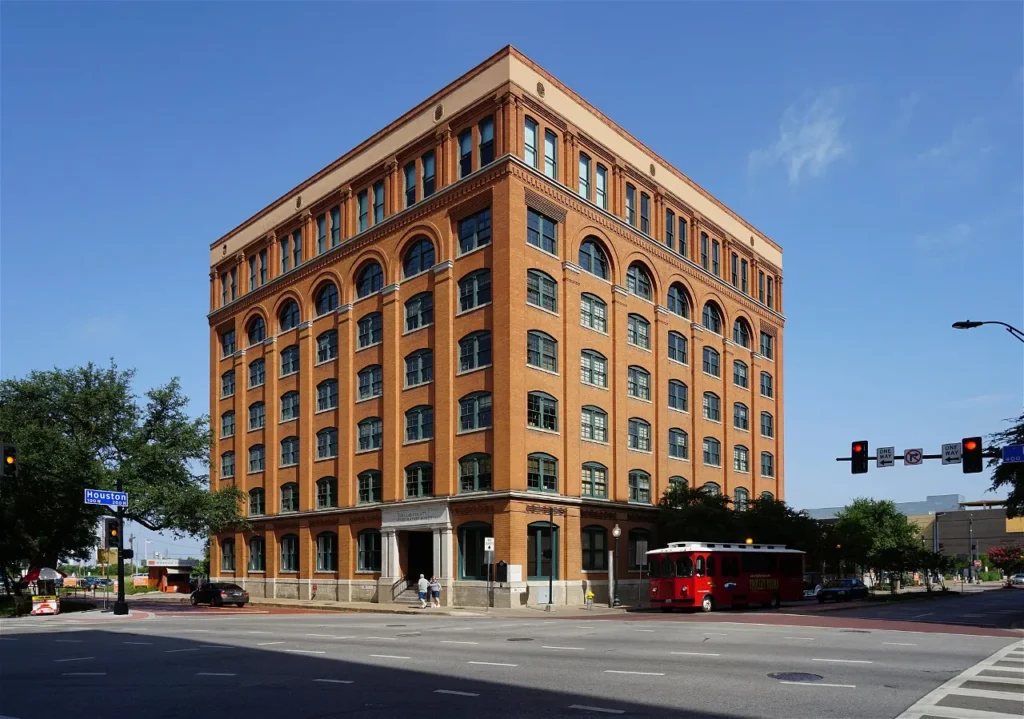
For many visitors, Dallas is forever linked with the tragic assassination of President John F. Kennedy on November 22, 1963. This historic event continues to echo through pop culture, documentaries, and conspiracy theories. To grasp the magnitude of what happened that day, the best place to begin is the Sixth Floor Museum, located inside the former Texas School Book Depository, where Lee Harvey Oswald — then an employee — is believed to have fired the fatal shots.
Occupying the actual sixth floor of the depository, the museum weaves together JFK’s life, presidency, and assassination using multimedia exhibits, photographs, and eyewitness footage, including films taken by bystanders that day. More than just a recounting of his death, the displays paint a fuller picture of Kennedy’s legacy, politics, and personal life.
Visitors can also explore exhibits focused on Oswald, his background, and the series of missed opportunities that might have prevented the assassination. Notably, an Italian Mannlicher-Carcano rifle — the same model Oswald used — is on display, and some areas of the museum have been restored to their exact 1963 appearance.
Stepping outside, you’ll find yourself at Dealey Plaza, where history feels remarkably close. On Elm Street, a white ‘X’ marks the exact location where JFK was struck. The Grassy Knoll, now almost mythical, draws visitors curious about alternate theories — including those who believe a second shooter may have fired from behind the fence.
If you’re intrigued by the many conspiracy theories, local guides offer walking tours around the area, sharing alternate versions of events that continue to stir debate even 60 years later.
After the assassination, the Texas School Book Depository was nearly demolished. However, thanks to efforts by Dallas Mayor Wes Wise, the building was preserved. It functioned as a warehouse until the 1970s and was eventually converted in the 1980s into both the museum and offices for the Dallas County Administration.
Today, the museum is one of the city’s most significant attractions. While the topic is heavy, it provides valuable historical insight and is often recommended for older children and teens, particularly those familiar with U.S. history.
Just across from the museum is the Old Red Museum, which offers a broader look at Dallas’ history in a family-friendly format. A short walk away, you’ll find the John F. Kennedy Memorial, a minimalist cenotaph designed by architect Philip Johnson, symbolizing JFK’s ideals of openness and change.
Admission: Tickets can be purchased online or on-site.
Hours: Check the official Sixth Floor Museum website for up-to-date times and pricing.
Tip: Bring a picnic and relax in Dealey Plaza to reflect in the very place where history was made.
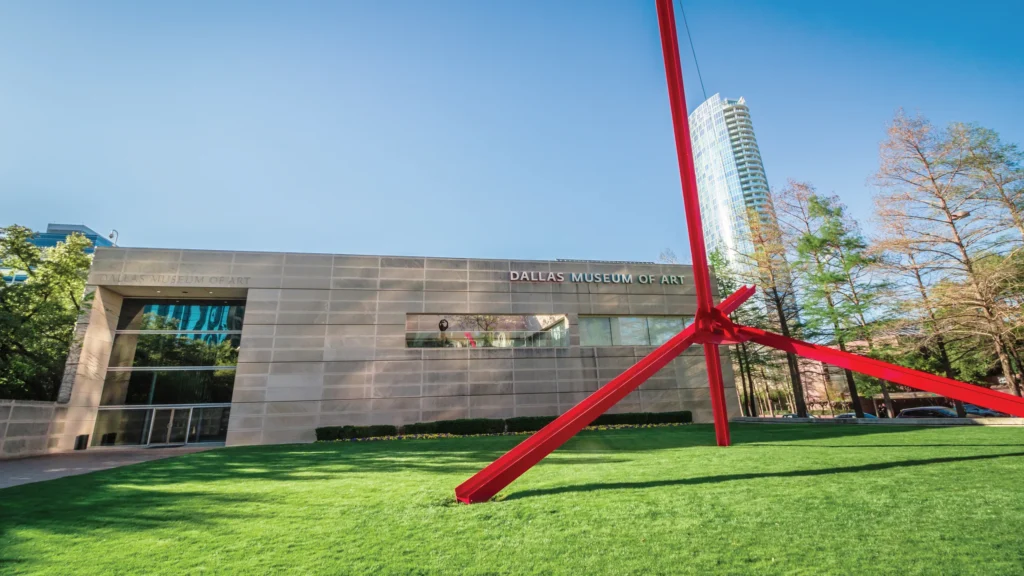
Founded in 1903, the Dallas Museum of Art (DMA) stands as one of the city’s most celebrated cultural institutions. With a collection that bridges the ancient and the contemporary, this world-class museum takes visitors on an inspiring tour through centuries of human creativity — from the art of Europe and the Americas to global archaeological treasures.
Unlike some museums that place modern art on a pedestal while overlooking the richness of world cultures, the DMA takes a refreshingly inclusive approach. Its galleries are filled with fascinating finds that appeal to both art lovers and curious families alike.
Ancient Civilizations: Admire Greek, Roman, and Etruscan relics, alongside intricately painted Mimbres bowls from New Mexico and golden masks from pre-Columbian Peru. Don’t miss the Mayan flint knife shaped like a crocodile canoe with human figures — a truly unique artifact.
American & European Masters: Highlights include Edward Hopper’s moody Lighthouse Hill, Frederic Church’s icy masterpiece The Icebergs, and Winston Churchill’s paintings displayed in a villa-inspired space modeled after Coco Chanel’s French Riviera home. European icons like Van Gogh (Sheaves of Wheat), Magritte, Mondrian, Monet, and Picasso are also well represented.
Just across the street is the Nasher Sculpture Center, housed in a stunning glass-and-steel building designed by Renzo Piano. Its lush sculpture garden and permanent collection — featuring works by Rodin, Calder, de Kooning, Serra, and Miró — were carefully curated by Raymond and Patsy Nasher. (Note: Admission to the Nasher requires a separate ticket.)
Despite its sleek, modern appearance, the DMA has deep historical roots. It began with public art exhibitions organized by the Dallas Art Association in the early 1900s. Thanks to the efforts of May Dickson Exall, the museum found its first permanent home in Fair Park in the 1930s.
Over the decades, the museum survived political pressures — including a McCarthy-era movement to censor works by “communist” artists like Picasso. In the 1960s, it merged with the Dallas Museum of Contemporary Art, combining historic and modern art under one roof. Its current home, a bold concrete structure in the Dallas Arts District, opened in 1984.
Admission: Free general entry (online booking may be required).
Closed: Mondays.
Busy Times: Weekends and weekdays during school visits.
Special Exhibitions: Some shows require a paid ticket — check the official website for updates and event details.
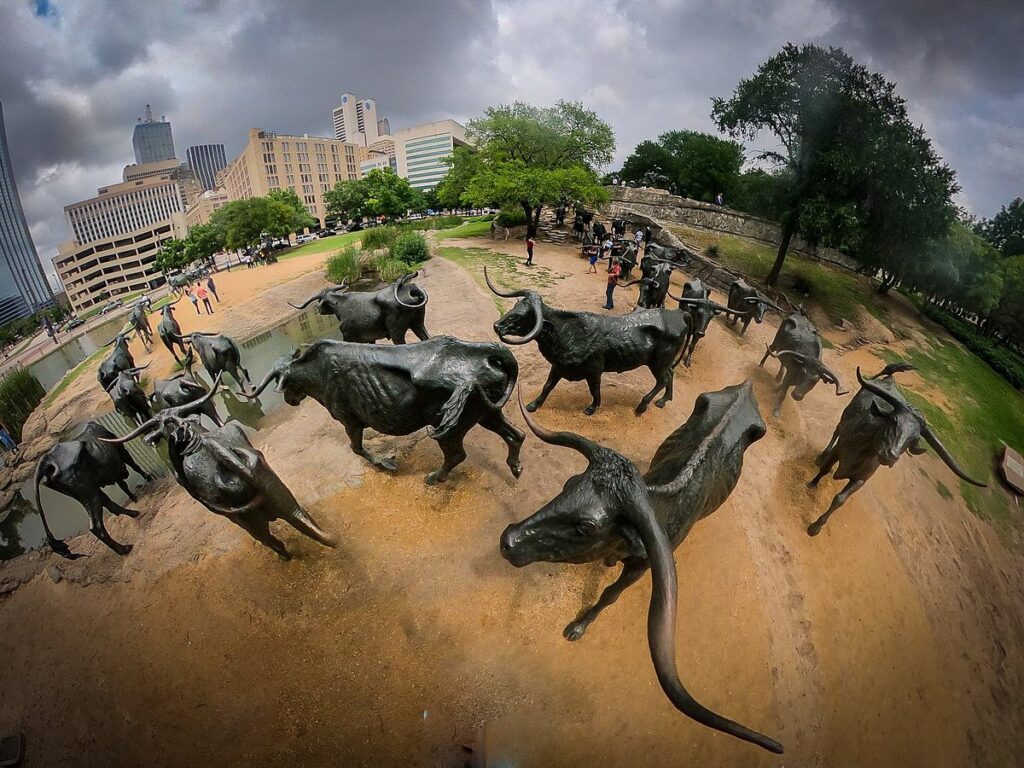
For a classic Texas-sized photo op, make your way to Pioneer Plaza, right in the heart of downtown Dallas. This iconic site brings together several strands of American history — from the legendary cattle drives of the Old West to the final resting place of local leaders and Civil War veterans.
The plaza’s centerpiece is a larger-than-life bronze sculpture, believed to be one of the largest bronze monuments in the world. Created by self-taught Texas sculptor Robert Summers in 1994, the installation features 49 longhorn steers and three cowboys, frozen mid-drive as they cross a rugged stream bed. The scene pays homage to the Shawnee Trail, a key cattle route that once passed through Dallas, guiding thousands of longhorns to market in the 1800s.
Although the more famous Chisholm Trail through Fort Worth later overshadowed it, the Shawnee Trail holds a special place in Dallas history — and this monument keeps its memory alive in stunning detail, right down to the “D” brands etched into the steers’ hides.
Ironically, the land now known as Pioneer Plaza was once a vacant lot, cleared for a skyscraper that never materialized. Thanks to civic efforts and Summers’ vision, it was transformed into one of Dallas’ most beloved public spaces, offering a powerful visual link to the state’s frontier legacy — all set against the modern city skyline.
Next to the sculpture park lies Pioneer Cemetery, where you’ll find graves dating back to the 1850s. Here rest early settlers, former mayors of Dallas, and veterans of both the Texas Revolution and the American Civil War. One notable figure buried here is John McClannahan Crockett (1816–1877), cousin of the legendary Davy Crockett.
While the cemetery once featured a Confederate War Memorial, the statue was removed in 2020 following Black Lives Matter protests, reflecting the evolving dialogue around public memory and representation.
Location: Between Griffin St and Young St, a short walk from Dealey Plaza, the JFK Memorial, and the Sixth Floor Museum.
Parking: Limited free street parking is available nearby. Otherwise, use paid lots in downtown.
Hours: Open daily; no admission fee.
Accessibility: Flat walkways make the site accessible for strollers and wheelchairs.
Whether you’re a history buff, a photography enthusiast, or just exploring Dallas on foot, Pioneer Plaza is a striking tribute to Texas’ bold and complex past — and well worth a visit.
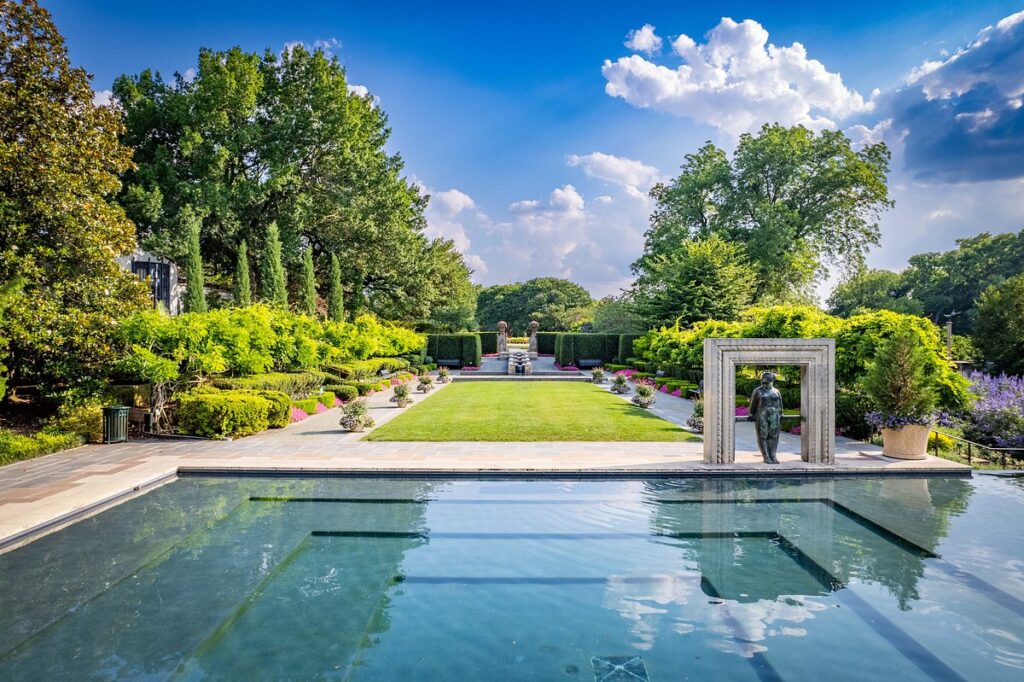
Stretching along the northeastern edge of White Rock Lake, just six miles from downtown Dallas, the Dallas Arboretum & Botanical Gardens offers 66 acres of vibrant, curated beauty. This floral oasis features manicured gardens, cascading waterfalls, artistic sculptures, and tranquil brooks — making it one of the most scenic green spaces in the city and a perfect spot to unwind from Dallas’ urban buzz.
The Arboretum was originally part of Rancho Encinal, the estate of geophysicist Everette Lee DeGolyer, a notable figure in the Texas oil industry. His wife, Nell DeGolyer, began planting the gardens that would eventually become this public treasure. The property later expanded to include the Alex Camp House and its surrounding grounds, creating the lush, multi-garden attraction visitors enjoy today.
The gardens blend global styles and native flair, with elegant flowerbeds, sculpted topiary, and panoramic lake views. Whether you’re strolling through the graceful Sunken Garden, snapping photos in the Woman’s Garden (featuring water features and bronze statues in stone frames), or lounging lakeside with a picnic, the Arboretum delivers peaceful charm at every turn.
The former DeGolyer estate now houses a courtyard café, but many visitors prefer dining al fresco under the trees with a picnic blanket and views of the skyline.
Perfect for kids, the Rory Meyers Children’s Adventure Garden includes themed zones designed to introduce children to nature through interactive, age-appropriate activities. It’s an engaging and educational stop for families with young explorers.
To enjoy a less crowded visit, plan ahead — especially during popular times like:
Spring: When wildflowers bloom and 150 cherry trees blanket the paths in soft pink petals.
Fall: For the annual Pumpkin Village, featuring thousands of pumpkins arranged in stunning displays.
Winter holidays: When the garden transforms into a festive wonderland with the 12 Days of Christmas display.
Tickets should be booked online in advance, particularly during peak seasons when nearby roads may close due to high foot traffic. Parking is available, and you’ll save $5 by booking it ahead online. In August, admission drops to just $2, with parking reduced to $5, making it the most budget-friendly time to visit.
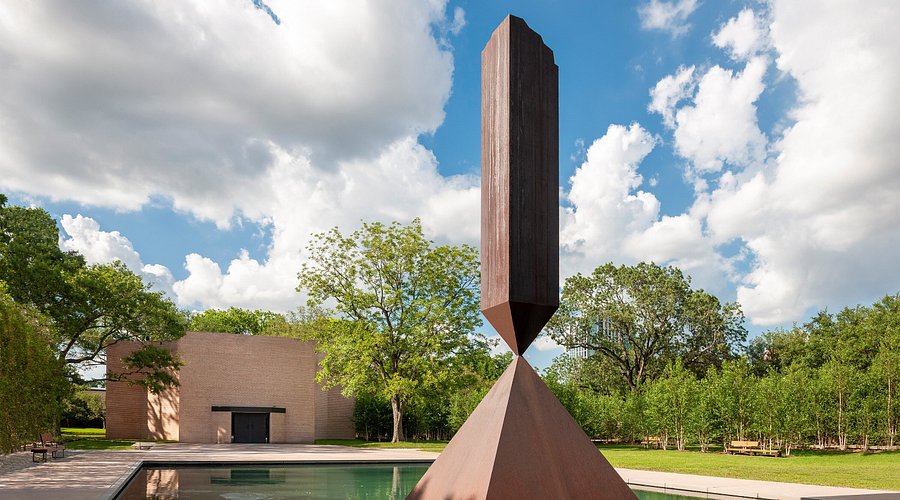
Commissioned in 1964 by art patrons Dominique and John de Menil—the same visionary minds behind the Menil Collection—the Rothko Chapel stands as a deeply contemplative space where art, spirituality, and social justice meet. Renowned abstract expressionist Mark Rothko (1903–1970) devoted the final years of his life to creating this nondenominational chapel, which today draws more than 100,000 visitors each year.
The de Menils envisioned a spiritual sanctuary that transcended religious boundaries, and they gave Rothko complete artistic freedom to shape its mood and purpose. Working closely with architects Philip Johnson, Howard Barnstone, and Eugene Aubry, Rothko helped shape not just the chapel’s octagonal design, but its very atmosphere.
Inside, 14 monumental Rothko canvases—at first glance nearly black—invite a slower, quieter experience. With time, subtle hues and textures begin to emerge from the darkness, drawing viewers into the kind of deep emotional and spiritual introspection Rothko intended. The effect is powerful, often moving visitors to tears.
The Rothko Chapel is also home to the Óscar Romero Award, presented biennially to honor courageous advocates of human rights. Named for Archbishop Óscar Romero, who was assassinated in 1980 for speaking out against oppression in El Salvador, the award reflects the chapel’s ongoing commitment to justice and peace.
Outside the chapel, beside a reflecting pool, stands Barnett Newman’s striking sculpture Broken Obelisk. Originally meant to stand outside Houston City Hall, the de Menils relocated it to the chapel grounds after city officials refused to dedicate it to Dr. Martin Luther King, Jr. following his assassination. The sculpture now serves as a monument to King’s legacy, quietly reinforcing the chapel’s dedication to social conscience.
Admission: Free
Hours: Open daily from dawn to dusk; closed Mondays
Photography: Not allowed inside the chapel, but permitted on the grounds
Special Ceremonies: The chapel may be reserved (for a fee) for private events such as weddings, baptisms, memorials, and bar mitzvahs
The Rothko Chapel is not just a work of art — it’s a place to pause, reflect, and reconnect, making it one of the most meaningful destinations in Houston for both art lovers and seekers of peace.
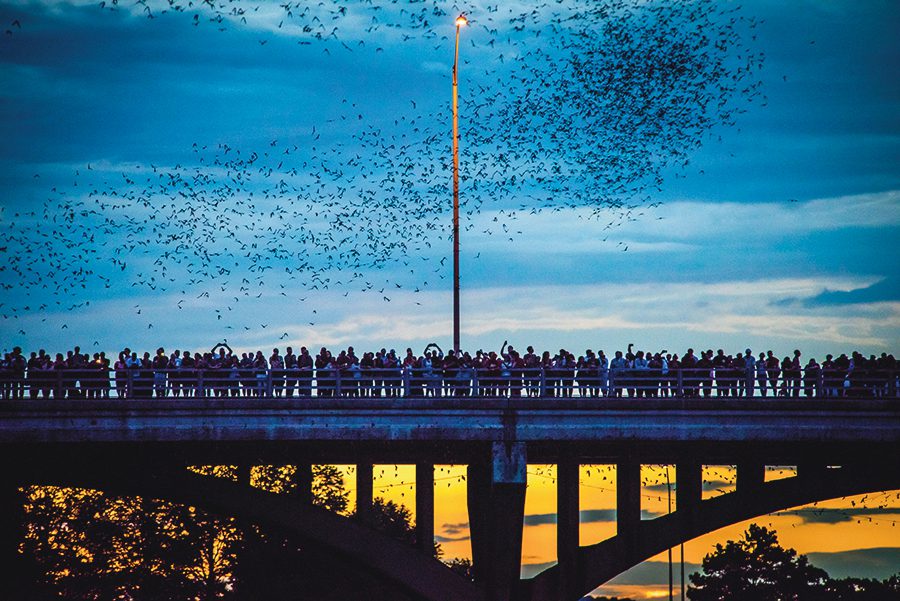
In a city known for keeping things quirky, one of Austin’s most beloved (and unexpected) traditions is watching millions of bats take flight at sunset. Each evening between March and October, as dusk falls over Lady Bird Lake, the Congress Avenue Bridge becomes the stage for North America’s largest urban bat colony — a mesmerizing, swirling black ribbon of life against the fading sky.
Up to 1.5 million Mexican free-tailed bats, primarily females and their pups, roost beneath the bridge’s structure. Each June, mothers give birth to a single pup, and by late summer, the colony takes to the skies en masse to hunt. At their peak, they consume up to 30,000 pounds (13,500kg) of insects nightly, soaring high — sometimes up to 10,000 feet — in search of prey.
Bat Observation Area
Located on the southeast side of Congress Avenue, this area offers wheelchair-accessible seating and educational kiosks provided by Bat Conservation International, whose volunteers are present on weekend evenings during peak months (May to September). Entry is free, but you’ll need to pay for parking nearby.
Congress Avenue Bridge
The sidewalks of the bridge fill up well before sunset. Arrive early for a good spot and enjoy the buzzing energy of fellow bat-watchers as the colony prepares to launch.
Lady Bird Lake Shoreline
Bring a blanket and relax on the grassy banks near the bridge — a peaceful and popular option.
On the Water: Boat & Kayak Tours
Lone Star Riverboats and Capital Cruises offer bat-watching boat tours from behind the Hyatt Hotel
Adults: $12
Kids: $7
Capital Cruises also offers guided kayak tours for around $30
Prefer your own paddle? Bring your SUP or kayak and launch from Zilker Park or other public access points along the lake.
WhatsApp us